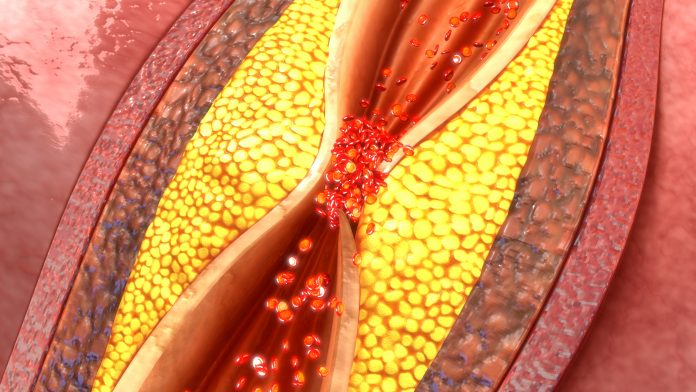
A team of investigators from Tsinghua University in Beijing, China report the development of a diagnostic method that combines facial thermal imaging and artificial intelligence (AI) to accurately predict the presence of coronary artery disease. The new method, reported in the open access journal BMJ Health & Care Informatics, has the potential to be adopted for clinical practice to improve diagnostic accuracy.
Current guidelines for the diagnosis of coronary artery disease rely on a probability assessment of a variety of risk factors. While these methods can be supplemented by other tests such as electrocardiogram (EKG) readings, angiograms, and blood tests, they aren’t always accurate and involve invasive procedure.
By comparison, thermal imaging is non-invasive. It works by detecting the infrared radiation emitted by an object and can identify areas of abnormal blood circulation and inflammation based on patterns and variations of skin temperature. When combined with the ability of AI to identify and analyze complex data sets, the investigators say they can improve coronary artery disease diagnostics.
“The feasibility of [thermal imaging] based [coronary artery disease] prediction suggests potential future applications and research opportunities,” the researchers wrote in their study. “As a biophysiological-based health assessment modality, [it] provides disease-relevant Information beyond traditional clinical measures that could enhance [atherosclerotic cardiovascular disease] and related chronic condition assessment.”
For their research, the Tsinghua University investigators enrolled 460 people suspected of having heart disease in their study. Thermal images of their faces were captured before confirmatory examinations which were used to develop the AI assisted imaging model to detect coronary artery disease.
Of those enrolled, 322 participants—or about 70%—were confirmed to have coronary artery disease. Those identified with the condition tended to be older and were more likely to be male. This group was also more likely to have lifestyle, clinical, and biochemical risk factors for the disease, and a higher use of preventative medications.
Data analysis showed the thermal imaging plus AI method was 13% better at predicting those with coronary artery disease than the assessment technique that used current methods identifying traditional risk factors of the disease and clinical signs and symptoms.
From their data, the researchers categorized the three most significant predictors of the disease: overall left-right temperature variations in the face, maximal facial temperature, and average facial temperature
Notably, the strongest predictor was the average temperature of the left jaw region followed by the temperature range of the right eye region and the left-right temperature difference of the left temple regions.
In addition, their approach also identified traditional risk factors including high cholesterol, male sex, smoking, excess weight ( high BMI), fasting blood glucose, and indicators of inflammation.
Study limitations included the small sample size of participants and the fact it was conducted at only on locations. Further, all study participants had been referred to the study based on suspected heart disease.
Nevertheless, the investigators noted that “Our developed [thermal imaging] prediction models, based on advanced [machine learning] technology, have exhibited promising potential compared with the current conventional clinical tools. Further investigations incorporating larger sample sizes and diverse patient populations are needed to validate the external validity and generalizability of the current findings.”












